INHF & State Parks: 40 Years of Partnerships
By Katy Heggen & Daria Mather on April 30, 2020 in Blog
Editor's note: Campground facilities, cabins, restrooms, playgrounds and other facilities are closed in Iowa state parks through at least May 14. Trails, roads, lake and river access points, boat ramps, shorelines, and open spaces remain open to the public.
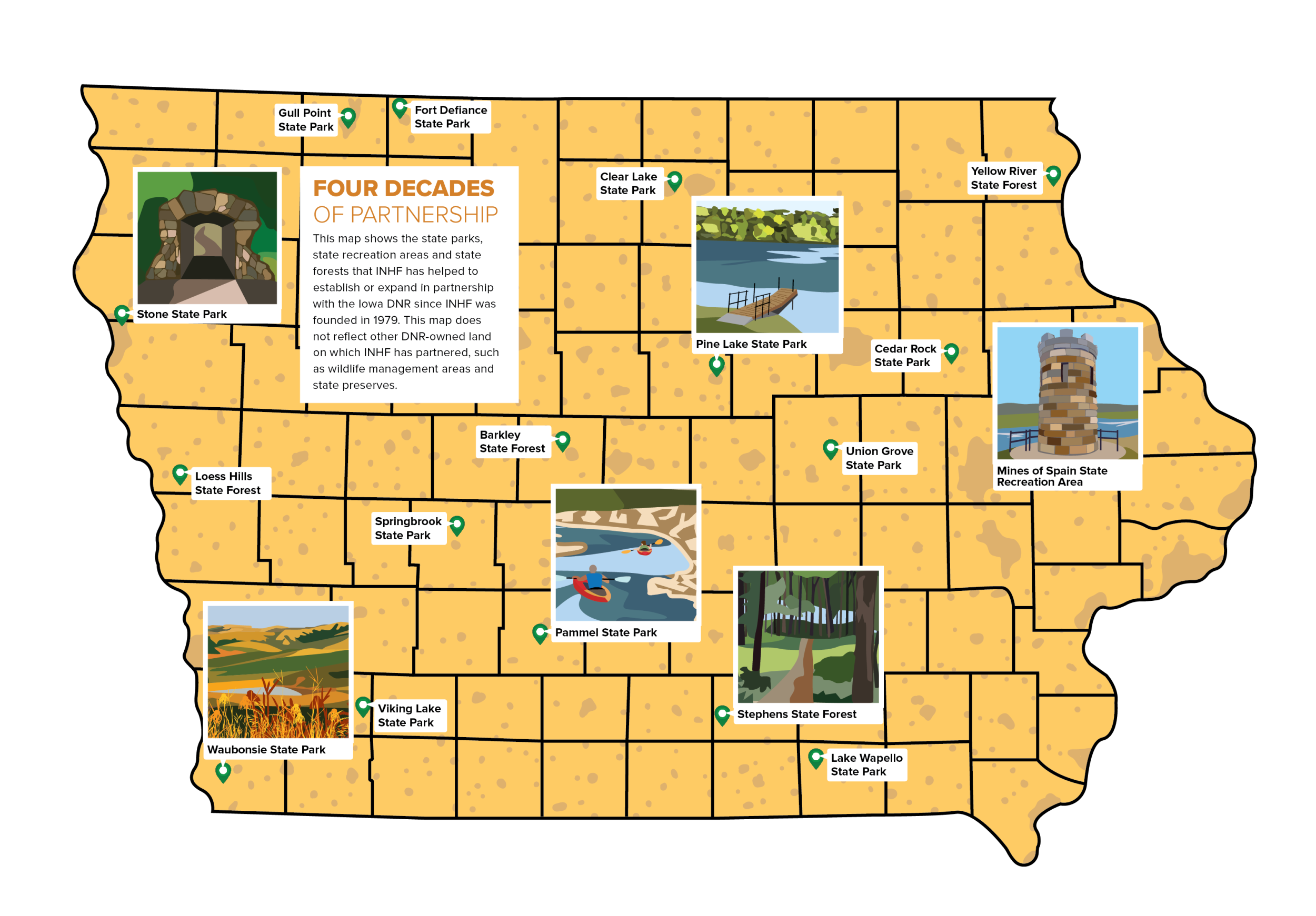
“Its sides are in places precipitous, the rock cliffs rising sheer for more than 80 feet. Erosion and secular decay have carved the rocks into picturesque columns, towers, castles, battlements and flying buttresses.”
State Geologist Samuel Calvin wrote these words more than a hundred years ago about the “backbone,” a steep, narrow ridge of bedrock that rises above the river that carved it, at Backbone State Park along the Maquoketa River in eastern Iowa. Dedicated in 1920, it was Iowa’s first state park, established just three years after the Iowa Legislature passed an act to create Iowa’s state parks system.
In the years since, 72 state parks and recreation areas, ten state forests, 95 state preserves and 492 wildlife management areas have been established across Iowa; though in a state with less than 2% of publicly accessible land, their creation has rarely come easily.
Iowa Natural Heritage Foundation (INHF) was founded in 1979 in part because important natural lands were being offered for sale and the Iowa Department of Natural Resources (DNR) and county conservation boards (CCB) who protect public lands across the state could not act quickly enough to purchase and protect them. It was heartbreaking to watch prairies, woodlands, river corridors, wetlands and wildlife — especially those adjacent to existing public lands — go unprotected.
INHF quickly began working with private landowners across Iowa who wanted to sell or donate their land for conservation, and the DNR and CCBs to identify, purchase and hold special places until the state and counties could secure funding. Many of these lands are now part of the Iowa State Parks and Iowa’s County Conservation systems. INHF’s work has evolved considerably in the past four decades, but this work remains an integral part of our mission to this day.
Here’s a look at a few of the state parks, state recreation areas and state forests INHF has helped protect or expand in the last 40 years:
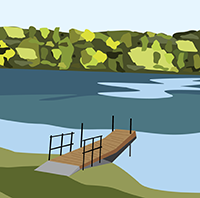 Pine Lake State Park
Pine Lake State Park
Hardin County
INHF additions:
2001: 74 acres
2004: 15 acres
Located along the Iowa River, Pine Lake State Park is among Iowa’s earliest state parks. Established in 1929, it features a mix of landscapes including woodland, wetlands, lakes, river and remnant prairie. You can experience all of these habitats on the trails running through the park or by way of the Iowa River as this park is part of the Iowa River Greenbelt region.
These habitats allow for native plants and animals including white pines and rare ferns to thrive in the park. Many of the 250-year old giant pine trees for which the park was named were lost in a 2009 hailstorm. Thankfully, with help from private donors, the Iowa DNR has been able to plant new pine trees. Visitors can see the seedlings throughout the park.
In 2001, INHF helped to protect a 74-acre addition to Pine Lake State Park. An additional 15 acres were protected and added to the park with the help of INHF in 2004.
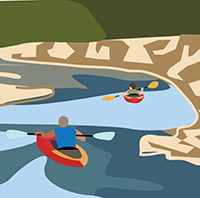 Pammel State Park
Pammel State Park
Madison County
INHF additions:
2001: 71 acres
Dedicated in 1928, Pammel State Park was one of the first state parks in Iowa. Named after Louis H. Pammel, the architect of the Iowa park system, it features outstanding woodland vegetation, the Middle River and a limestone ridge known as the “backbone,” a 100-foot high natural ridge that runs through the park.
Pammel State Park is home to a diversity of native woodland plants and animals including some of the oldest recorded oak trees in the state. Many grow from the craggy surfaces along the limestone backbone. Some of the best quality walnut stands in central Iowa can also be found here.
This park, which has been managed by the Madison County Conservation Board since 1989, has something for everyone, including picnic grounds, a lodge built by the Civilian Conservation Corps in the 1930s, yurts and a river ford built in the 1920s, which is the only access to the west side of the park.
In 2001, INHF helped protect a 71-acre addition to the now 350-acre park.
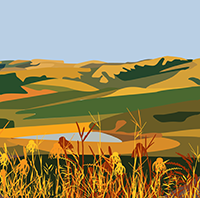 Waubonsie State Park
Waubonsie State Park
Fremont County
INHF additions:
2005: 722 acres
Waubonsie State Park on the west side of the state lies in the heart of the Loess Hills. Named for Chief Waubonsie of the Potawatomi tribe, the park is much the same today as it was when it was purchased in 1926.
Waubonsie State Park features classic Loess Hills peak and saddle topography, which is highlighted by seven miles of foot trails and eight miles of equestrian trails winding through the park. It is also a site on the Lewis and Clark Historical Trail. The seven-acre Lake Virginia offers opportunities for fishing, boating
and picnics.
In 2005, INHF purchased the 722-acre former Wa-Shawtee Girl Scout Camp as an addition to the park. This expanded not only the park, but year-round recreational opportunities to include seasonal and year-round cabin accommodations and a day-use lodge.
 Stone State Park
Stone State Park
Woodbury County
INHF additions:
2005: 63 acres
2006: 98 acres
2007: 63 acres
2008: 40 acres; 24 acres
2009: 58 acres; 70 acres
2012: 23 acres; 29 acres
Stone State Park lies in the bluffs along the Big Sioux River in northwest Iowa near Sioux City. Like Waubonsie State Park, it also features loess hills land formations and is on the Loess Hills National Scenic Byway.
The park’s unique landscape can be explored via 15 miles of trails accessible to hikers, mountain bikers and equestrians, each offering a different view worth exploring.
Stone State Park is a sanctuary for many wildlife including wild turkeys, white-tailed deer, coyotes, red foxes and a variety of birds and butterflies that also thrive here.
Over the years, INHF has helped protect nearly 415 acres of the park’s 1,543 acres through a series of additions protecting remnant prairie, woodland and grasslands.
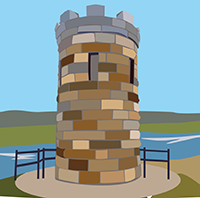 Mines of Spain State Recreation Area
Mines of Spain State Recreation Area
Dubuque County
INHF additions:
1980: Establish 1,260 acres
2011: 52 acres
Featuring stunning natural beauty and historically significant landmarks from which it draws its name, Mines of Spain State Recreation Area just south of Dubuque is a popular place to explore Iowa’s outdoors.
Stretching 1,439 acres along the bluffs overlooking the city, the park features a diverse mix or woodland and prairie, over 15 miles of hiking trails and breathtaking views of the Mississippi River Valley Below.
The area, which has been designated as a National Historic Landmark, was INHF’s first major protection project. The owners of this much beloved bluff did not want to deal directly with governmental agencies, which had long sought to acquire the site, but were willing to sell the land to INHF for conservation. It was dedicated in 1981. INHF helped protect a 52-acre addition to the park in 2011.
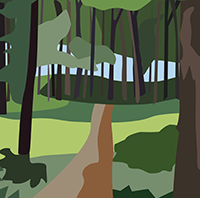 Stephens State Forest
Stephens State Forest
Lucas, Clarke, Appanoose, Monroe and Davis counties
INHF additions:
2012: 130 acres
2013: 111 acres; 227 acres
Located in central southern Iowa, Stephens State Forest is the largest of Iowa’s ten state forests covering 15,554 acres. Spread across seven units encompassing five counties: Lucas, Clarke, Monroe, Appanoose and Davis, it is as diverse as it is dense.
The original intent of the forest’s founders was to create an example of forest management for the state’s citizens. In the late 1930’s, the Civilian Conservation Corps established hardwood and conifer plantings throughout the forest, many which remain today. While the forest continues to serve its educational purpose, it is also a popular area for outdoor recreation activities including as hiking, hunting, fishing, wildlife watching, cross-country skiing, mountain biking and camping (opportunities vary by unit).
INHF helped protect three additions between 2012 and 2013.
INHF also helped to expand or establish the following parks:
Barkley State Forest, Boone County
Cedar Rock State Park, Buchanan County
Clear Lake State Park, Cerro Gordo County
Fort Defiance State Park, Emmet County
Gull Point State Park, Dickinson County
Lake Wapello State Park, Davis County
Loess Hills State Forest, Monona and Harrison counties
Springbrook State Park, Guthrie County
Union Grove State Park, Tama County
Viking Lake State Park, Mongomery County
Yellow River State Forest, Allamakee County
Read more: “Iowa State Parks: A Century of Stewardship, 1920-2020” is being released in conjunction with the Iowa DNR’s Parks 2020 centennial celebration. A historical overview sets the stage for the book, followed by essays on the key aspects of today’s Iowa State Parks system. The books can be ordered here.